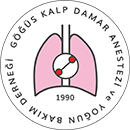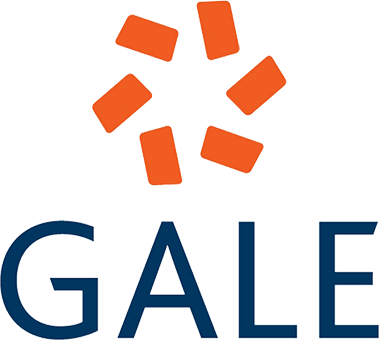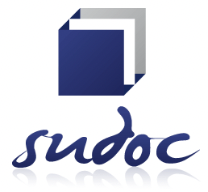

REM İlişkiliUykuda Obstrüktif Uyku Apne Sendromunun Klinik ve Polisomnografik Özelliklerinin Belirlenmesi ve Değişikliklerin Saptanması
Mustafa Anıl Cömert1, Murat Acerel1, Dilek Sözmen Savaşkan1, Şule Sünmez Cömert3, Nihan Yapıcı1, Türkan Kudsioğlu1, Tülin Yılmaz Kuyucu21SAĞLIK BİLİMLERİ ÜNİVERSİTESİ Dr. Siyami Ersek Göğüs Kalp ve Damar Cerrahisi EAH, Anestezi ve Reanimasyon Kliniği, İstanbul2SAĞLIK BİLİMLERİ ÜNİVERSİTESİ SÜREYYAPAŞA GÖĞÜS HASTALIKLARI VE GÖĞÜS CERRAHİSİ EĞİTİM VE ARAŞTIRMA HASTANESİ
3Haydar paşa numune hastanesi
GİRİŞ ve AMAÇ: REM ilişkili uykuda solunum bozukluğu (REM USB), solunumsal olayların esas olarak REM uykusunda ortaya çıktığı obstrüktif uyku apne sendromunun (OUAS) bir alt grubudur. Anestezi öncesi değerlendirmede bu hastaların tanınması, perioperatif ve postoperatif morbidite ve tedavilerinin düzenlenmesi için oldukça önemlidir.
YÖNTEM ve GEREÇLER: Hastane etik kurulu onayı alınarak çalışmaya uyku laboratuvarında Aralık2006-Ocak 2009 tarihleri arasında polisomnografik(PSG)tetkik yapılan toplam 4282 olgunun kayıtları incelenerek REM USB tanımına uyan toplam 80 olgu çalışmaya alındı. Olgu seçimi apnehipopne indeksi (AHİ) nin> 5, NREM AHİ in <15, REM-AHI/NREM-AHInin en az 2 olması ve REM uyku oranının en az % 15 olması ile yapıldı. Uyku apnesi tanısında altınstandart olan PSG ile gece boyunca apnenin varlığı, tipi ve ciddiyeti saptandı.
BULGULAR: Çalışmaya alınan hastaların % 60 erkek ve %40 kadın, yaş ortalaması 49.45±10.9 idi. REM USB prevalansı % 1.89 ve erkeklerde daha fazla bulundu(% 60).
REM USB saptanan toplam 80 olgudan 20sinin PSGleri kontrol amacı ile tekrarlandı. İlk ve ikinci çekimin polisomnografik bulguları karşılaştırıldı. Olgulardan 4ünün iki polisomnografisi arasında en az 2.5 yıl, 8 inin en az 1.5 yıl, 8 olgunun ise en az 1 yıl süre vardı. Çalışmamızda 20 olgunun 1. ve 2. polisomnografileri karşılaştırıldığında istatistiksel olarak anlamlı bir farklılık saptanmadı.
TARTIŞMA ve SONUÇ: REM USBnin bağımsız, farklı bir antite olduğu,uykuda solunum bozukluğu spektrumu içinde değerlendirilmesi gerektiği kanısına vardık, ancak tedavi gerekip gerekmediği konusunda görüş bildirmek mümkün değildir.
Determination of Clinical and Polysomnographic Features of REM Related Respiratory Disorder and Define Changes
Mustafa Anıl Cömert1, Murat Acerel1, Dilek Sözmen Savaşkan1, Şule Sünmez Cömert3, Nihan Yapıcı1, Türkan Kudsioğlu1, Tülin Yılmaz Kuyucu21Siyami Ersek Thoracic and Cardiovasculary Center, Department of Anaesthesiology, İstanbul2Süreyyapaşa Chest Diseases and Chest Surgery Training and Research Hospital
3Haydarpaşa Numune Training and Research Hospita
INTRODUCTION: REM sleep disordered breathing (REM SDB) is a subgroup of obstructive sleep apnea syndrome (OSAS) in which respiratory events are predominantly seen in REM period. Recognition of these patients before anesthesia is importance for the regulation of perioperative and postoperative morbidity and treatment.
METHODS: A total of 4,882 patients who underwent polysomnographic (PSG) examinations between December 2006 and January 2009 were included in the study. A total of 80 patients who met the REM SDB definition were included in thestudy. The accepted criteria for REM SDB are AHI > 5, NREM AHI < 15, REM-AHI/NREM-AHI ratio>2 and the percentage of REM sleep being at least 15 %.
Presence, type and severity of apnea were determined with PSG, which is the golden Standard for sleep apnea, during the night.
RESULTS: In our study 48 (60%) of our patients were male and 32 (40%) were female with a meanage of
49.45±10.95 changing between 27 to 75. The prevalance of REM SDB was found to be 1.89%.The PSGs of 20 out of a total of 80 detected REM USB are repeated with control purpose. The polysomnographic findings of the first and second episodes were compared. Of the four cases, four had at least 2.5 years between two polysomnography, eight with at least 1.5 years, and eight with at least 1 year. There was no statistically significant difference in ourstudy between the first and second polysomnograms of 20 cases
DISCUSSION AND CONCLUSION: We believe that REM USB should be evaluated in a sleep independent respiratory disorder spectrum, which is an independent, different entity, but it is not possible to comment on whether treatment is required.
Makale Dili: Türkçe
(4878 kere indirildi)

















